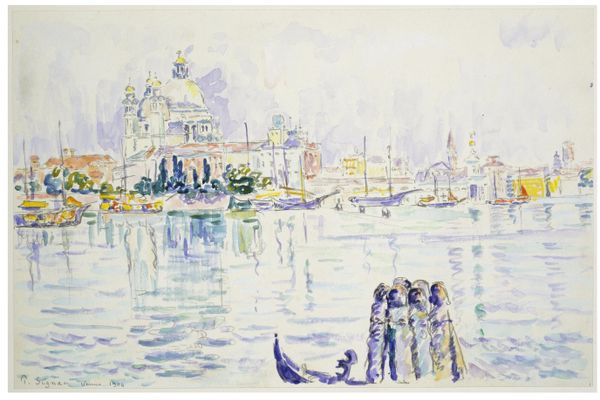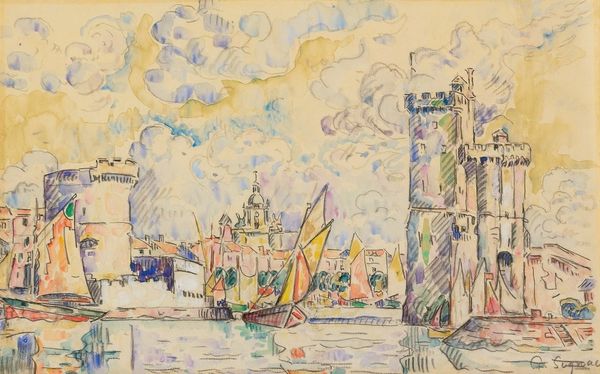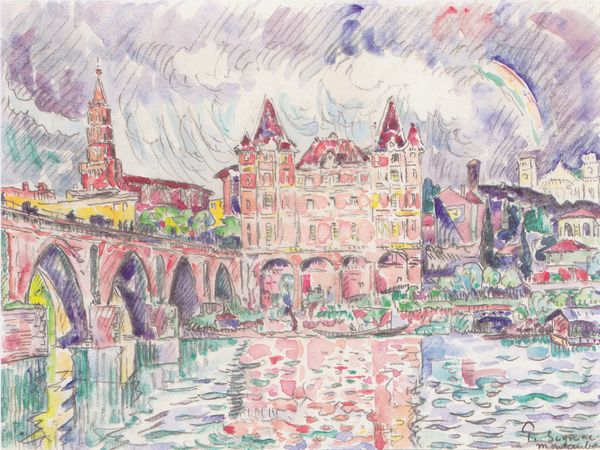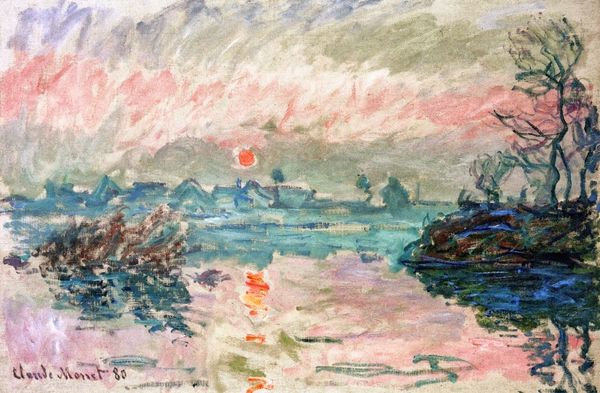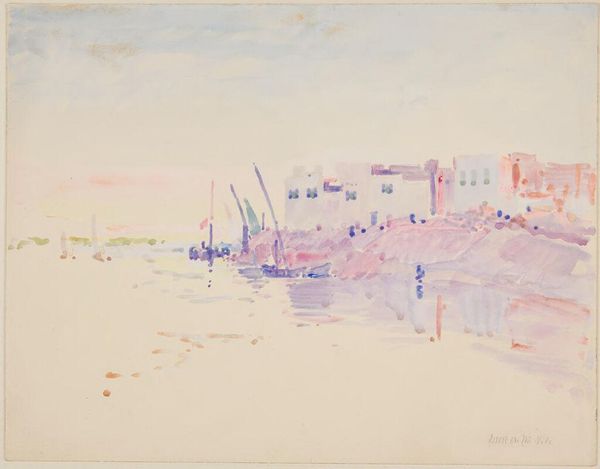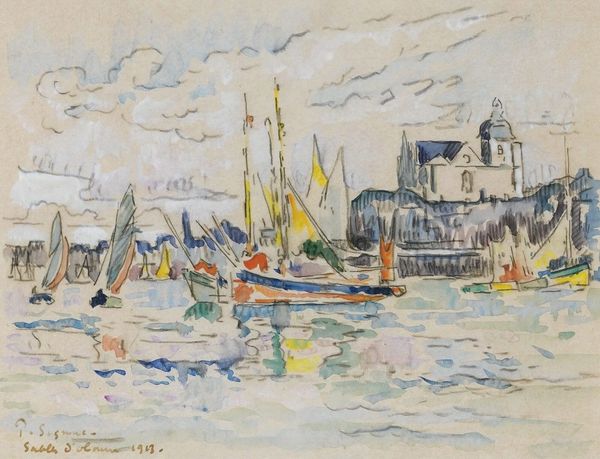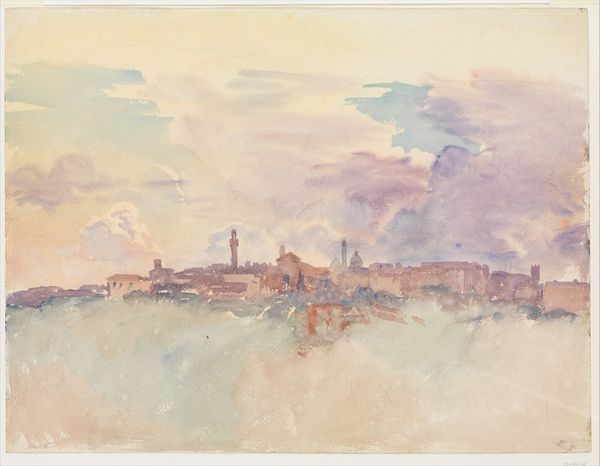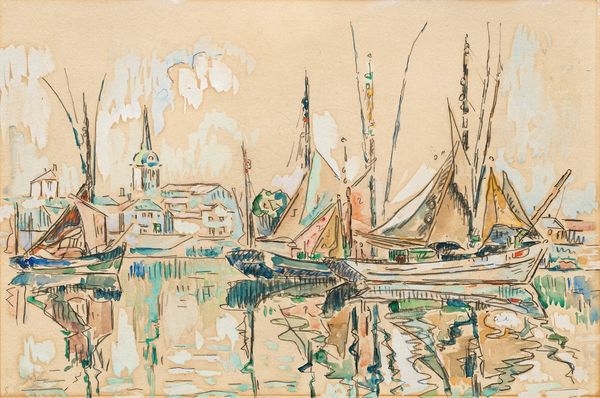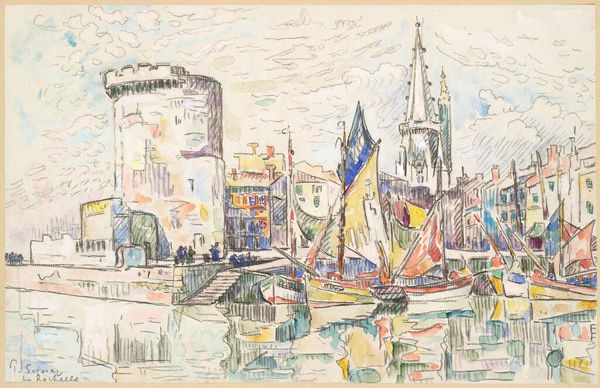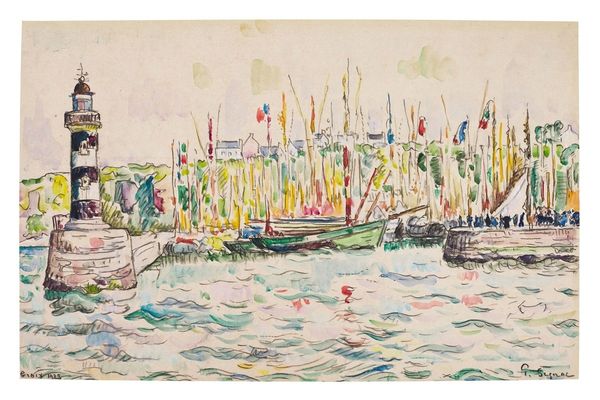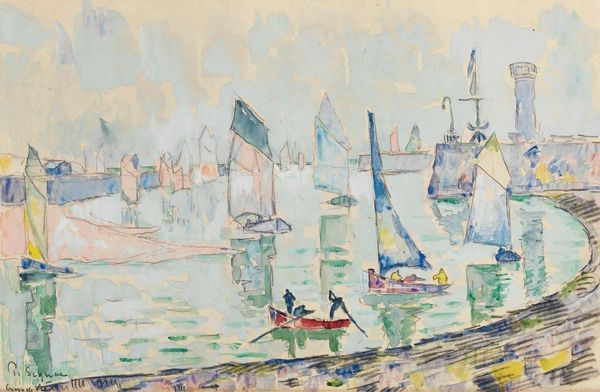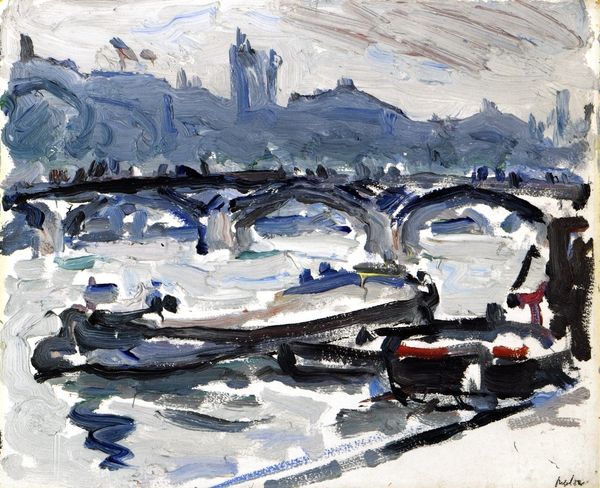
Dimensions: 265 × 389 mm
Copyright: Public Domain
Paul Signac made this watercolor painting of Notre Dame in 1910, demonstrating his commitment to capturing the essence of modern Parisian life and architecture. Signac, a leading figure in the Neo-Impressionist movement, embraced the progressive politics of the era through his distinctive painting style. Consider the visual vocabulary here. The painting's fragmented brushstrokes and vibrant hues reflect a deliberate departure from academic painting traditions. This stylistic choice aligns with the avant-garde's rejection of conservative artistic norms, mirroring broader socio-political movements advocating for change and challenging established hierarchies. Signac's artistic choices reflect the progressive, even utopian, ideals of the artistic avant-garde in France at the turn of the century. To delve deeper, research into the journals and exhibition catalogs of the time can reveal the extent to which Signac was trying to break down the established order, and whether this was a conscious act. Such resources are critical to understanding the painting’s role in shaping the narrative of modernity.
Comments
No comments
Be the first to comment and join the conversation on the ultimate creative platform.
